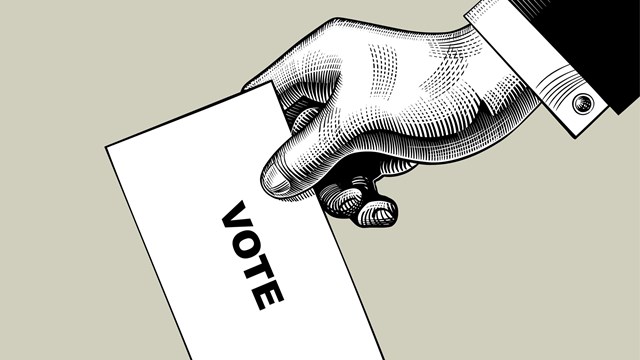
Cooperative corporations and condominium associations are collectives of shareholders and owners, respectively. Both are governed by a board, the members of which are typically elected by those same shareholders and owners.
Immediately following an election, a newly constituted or reconstituted board will meet and select officers to facilitate operations and delineate responsibility for discharging certain additional duties on behalf of the corporation or association. Generally, these official roles include president, vice president, treasurer, and secretary—and whether you yourself are a board member or a non-board resident, it’s important to understand the duties and limitations of each.
Roles, Definitions, & Delineations
President, Vice President, Treasurer, and Secretary: these four positions make up the governing core of just about any co-op, condo, or HOA board. Of course there are other possible positions on any given board, and like the core four, those positions are dictated by the corporation’s or association’s governing documents.
In the case of co-ops, explains Mark Hakim, an attorney with Schwartz Sladkus Reich Greenberg Atlas, a law firm located in New York, “The New York Business Corporation Law only provides that each board may elect or appoint certain officers, without specifics. As legal counsel, we therefore review an individual building’s bylaws to see what is mandated. The president, often the executive on the board, is generally the one who runs the meetings, acting in a supervisory role and ensuring that matters are carried out. The vice president is the second in command, often filling in if the president is unavailable. The treasurer generally performs all duties related to the building’s finances, including helping to prepare budgets, and liaises with the building’s accountant. The building’s secretary often is a signatory (along with the treasurer) on stocks and leases, as well as certain banking documents, and may also take the minutes of the meetings.”
This general structure isn’t just a New York thing. Under Illinois law, for example, the responsibilities of officers are similar to those described above. “The president is chief executive officer charged with implementing the board’s policies and decisions,” says Michael Kim, of counsel with Schoenberg Finkel Beederman Bell Glazer, a law firm based in Chicago. “Typically—with some discretion as to the details of such—the president chairs meetings of the board and the membership, provides general leadership in terms of guiding the board on issues and concerns, and is the main point of contact between the board/association and the management agent (if any), and other third parties.
“The vice president acts in the absence or unavailability of the president, and performs such other functions as assigned to him/her by the president or the board,” Kim continues. “The treasurer has the primary function of keeping the financial books and records of the association. He or she also generally handles and takes the lead on matters like the annual budget formulation, oversight of financial operations, and reporting on financial concerns to the board. The secretary’s primary function is keeping the corporate books and records—such as minutes of the board and membership meetings, for example—in good order. He or she also receives and issues notices as required by the association’s governing documents and the statutes, and certifies to third parties that corporate documents are true and correct.”
In most situations—particularly larger associations or corporations—the specific delineations of officer responsibilities are more detailed than the brief overviews above, but in smaller communities and in less regulated states, those definitions and delineations may be more flexible.
Consider New Jersey, for example. “Typically, we have all four officers in New Jersey associations,” says Steven Mlenak, an attorney with Greenbaum, Rowe, Smith & Davis, a law firm located in Roseland. “But in smaller communities the secretary and treasurer positions and responsibilities may be combined. Each association in New Jersey has its own set of bylaws which governs the community. Interestingly, officers selected by a board might not need to be board members. Sometimes bylaws require that; sometimes they don’t. You see this a lot with the treasurer position. In some circumstances, a more capable person—someone with some knowledge of financial instruments, etc.—will be chosen.”
Similar circumstances are common enough in other markets as well. In Massachusetts and throughout New England, it should be noted that small condominium associations are very common—and according to Ellen Shapiro, a partner with Allcock Marcus, a law firm located in Braintree, Massachusetts, “The designation of officers is not statutory; it’s completely governed by the community’s governing documents as to having these positions.” She cites an instant where the president of a condominium community where she lived was also the treasurer. She questioned having one person fill both roles, and the board president explained that no one else wanted to do it, so Shapiro volunteered. In her opinion, those two positions shouldn’t be combined. But nevertheless, in Massachusetts, it’s strictly a matter of the documents.
Term, Liability, & Accountability
As we’ve established, the specifics of board service and officer roles in shared interest communities like co-ops and HOAs are dictated by a given building or association’s governing documents, and can vary greatly from community to community, as well as by state to state. Governing documents are designed to be flexible to set forth a general basic framework for governance while providing considerations for variations among unique co-op and condominium properties.
Generally, “elections are held annually,” says Mlenak. “Members of the board are elected by the owners or shareholders, but officers are then appointed by the board. The board will meet after the election for a reorganization meeting, in which they elect the officers—typically for terms of a year. ”
“The board can remove an officer” from their position within the board, adds Shapiro, “but only the community can remove a board member from the board itself. Board members typically serve for anywhere from one to three years, but again, it’s document driven. Most boards should have staggered terms. You don’t want a whole board turning over at one time. Officers are usually appointed to be coterminous with that board member’s term in office by election.”
While some residents or board members might hesitate to accept an appointment to the position of vice president or treasurer for fear of liability exposure, the fact is that “a board member discharging his or her duties properly and with the best interests of the building should always be protected from any liability,” says Hakim. “Members are protected by [directors and officers, or ‘D&O’] insurance. The additional duties of being an officer should not in and of itself add liability—again provided that such officer discharges his or her duties properly, in good faith, and using honest business judgment. While officer positions may be separated based on title and role, the entire board plays a part in the decisions that are ultimately recommended by an officer, including approving contracts, budgets, etc. This helps to ensure that no one person wields too much power, nor do their actions go unchecked.”
A Cautionary Tale
Just as a well-functioning government is vital to the health of a nation, a well-functioning board is necessary for the health of a building or association community. All board members and board officers need to understand their specific roles and have the skill set to carry them out efficiently and effectively. With that said, occasionally one person may emerge as the power base in a community. Usually, this happens when someone makes decisions unilaterally in a well-meaning effort to cut through red tape, rather than anything nefarious. But while that might initially seem to streamline things and reduce bureaucracy, over time it’s not necessarily a good thing. The very nature of co-op, condo, and HOA governance really requires that more than one member be involved in governance. Buildings and HOAs are run by consensus, not by mandate.
“Sometimes,” says Kim, “the president becomes a ‘one person show,’ with the other officers and directors simply following along, with no oversight or check on the president. That can become a problem if the president is acting contrary to the law, or acting in his/her personal interests as opposed to the best interests of the association. That can also result in a leadership vacuum on the board if the president is suddenly no longer there due to death, unit sale, or any other cause. There are times when the true center of power on the board is another officer—perhaps the treasurer—and the president takes his or her lead from that other officer.
“On the other hand,” Kim continues, “a bitterly divided board can cause a lack of effectiveness—even on obviously important matters. Finally, there is the problem where the officers simply leave everything to the manager and do not exercise any meaningful oversight, which can lead to embezzlement opportunities.” These are just a few reasons why it’s important for the membership to keep these possibilities in mind at election time.
“Everyone in an association has the ability to provide checks and balances,” says Mlenak, “especially in condominiums. Members can inspect any financial documents upon request.” It’s a good way to keep a check on the board and its officers. “In New Jersey, there is the Department of Community Affairs, which governs these regulations and with whom you can file a complaint, if needed. It is a rare occurrence that we hear of anything like this, but it does happen.”
In the final analysis, more definition of roles is always better in shared community situations. Governing documents do provide flexibility, but members have the ultimate say in how and by whom their communities should be run. And, as Mlenak says, “the remedy for bad board leadership is to elect a new board.”









Comments
Leave a Comment